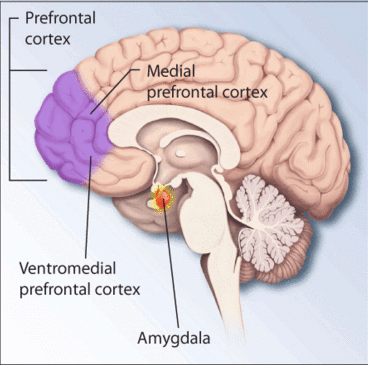Neuroimaging may aid in predicting PTSD following trauma

A recent study conducted by Emory University researchers finds that amygdala reactivity may help predict who will have PTSD in the year following a trauma. The amygdala is the area in the brain that processes emotion, aggression and fear.
The pilot study, published in Biological Psychiatry, points to the importance of identifying patients at risk after trauma exposure in order to better assist with recovery.
Using functional magnetic resonance imaging about a month after trauma, the research team, led by Jennifer Stevens, PhD, a postdoctoral fellow in the Department of Psychiatry and Behavioral Sciences, looked at reactivity in the amygdala while patients viewed pictures with either fearful or neutral faces.
The team conducted the neuroimaging study a month after participants were admitted to the emergency department (ED) at Grady Memorial Hospital, a level I trauma center. Participants were approached within 24 hours of a traumatic experience such as a car accident, work-related injury or assault.
Each participant's PTSD symptoms were assessed, through self-reporting, at one, three, six and 12 months after initial ED visit. Researchers found that, early after the traumatic event, participants with high levels of amygdala reactivity to the fearful faces had more severe PTSD symptoms initially and greater severity of symptoms 12 months after trauma.
"These findings are an important step in helping to predict PTSD symptoms for people who have experienced trauma and hopefully will lead to better treatment options," says Stevens.
"Almost everyone experiences stress symptoms right after a traumatic experience, but most people quickly recover without any treatment or intervention. We hope our research will help identify the people who do need help. In the long term, we want to find treatment options that can be deployed very early, perhaps in the emergency room, before the onset of debilitating mental health disorders such as PTSD," adds Stevens.
This research will be expanded through a recently launched multi-site study of PTSD, based at the University of North Carolina at Chapel Hill. The NIH-funded AURORA study will enroll more than 5,000 subjects in the aftermath of trauma from at least 10 additional emergency departments around the country.
Stevens and the research team at Grady will continue to perform neuroimaging studies, along with researchers in Boston. These planned studies will expand and build upon the current findings to further understand PTSD development, with a goal of identifying improved interventions and treatments.
More information: Jennifer S. Stevens et al. Amygdala Reactivity and Anterior Cingulate Habituation Predict Posttraumatic Stress Disorder Symptom Maintenance After Acute Civilian Trauma, Biological Psychiatry (2016). DOI: 10.1016/j.biopsych.2016.11.015
















